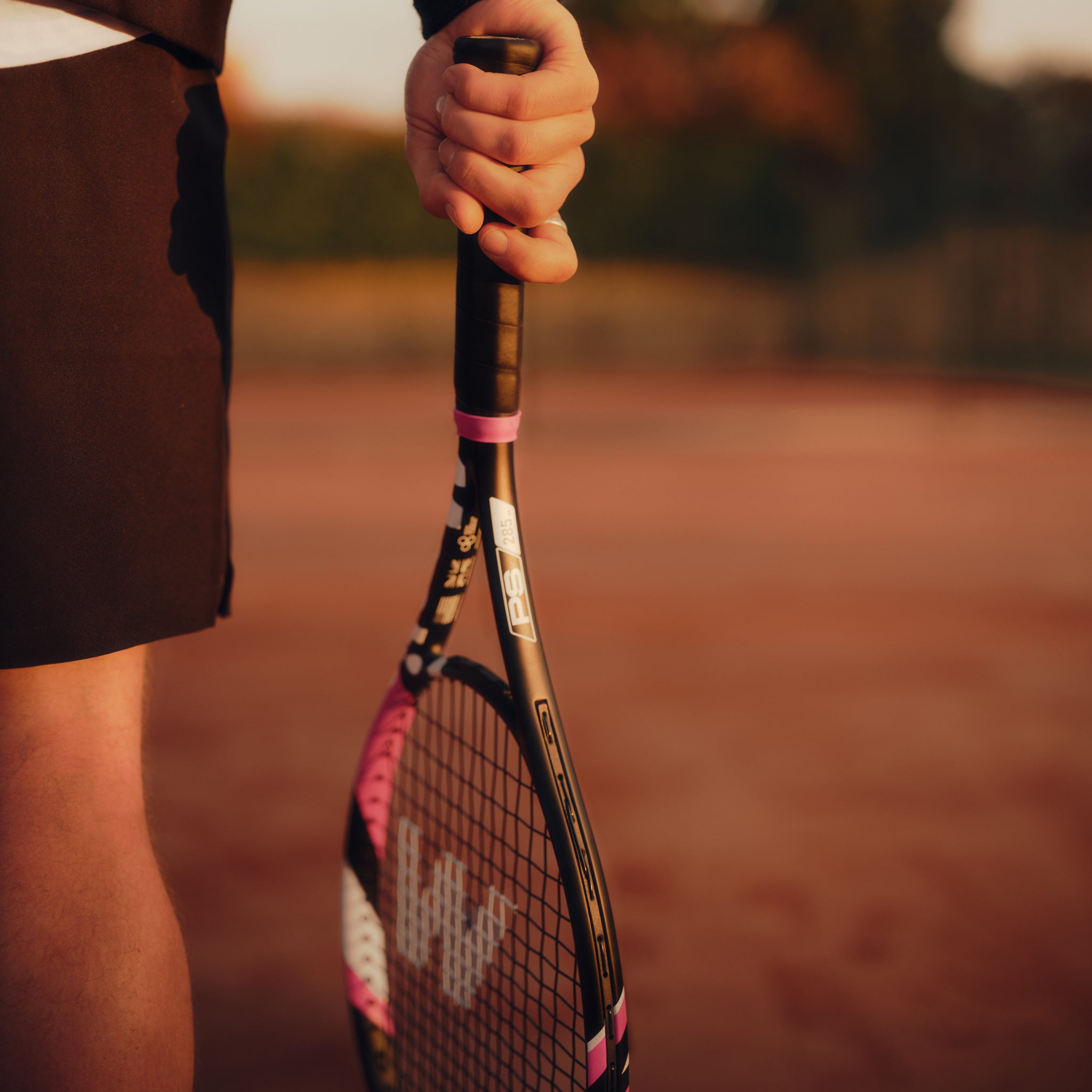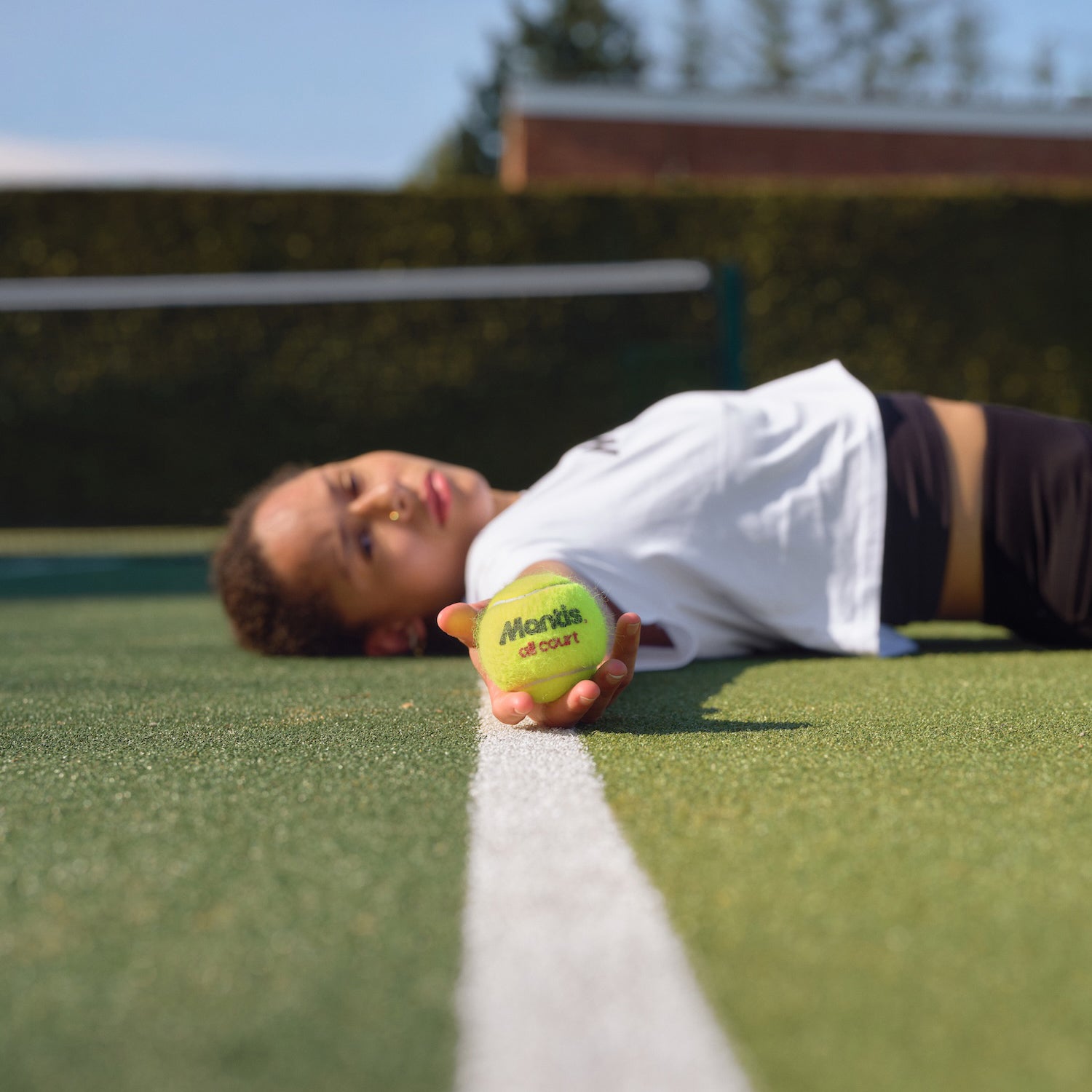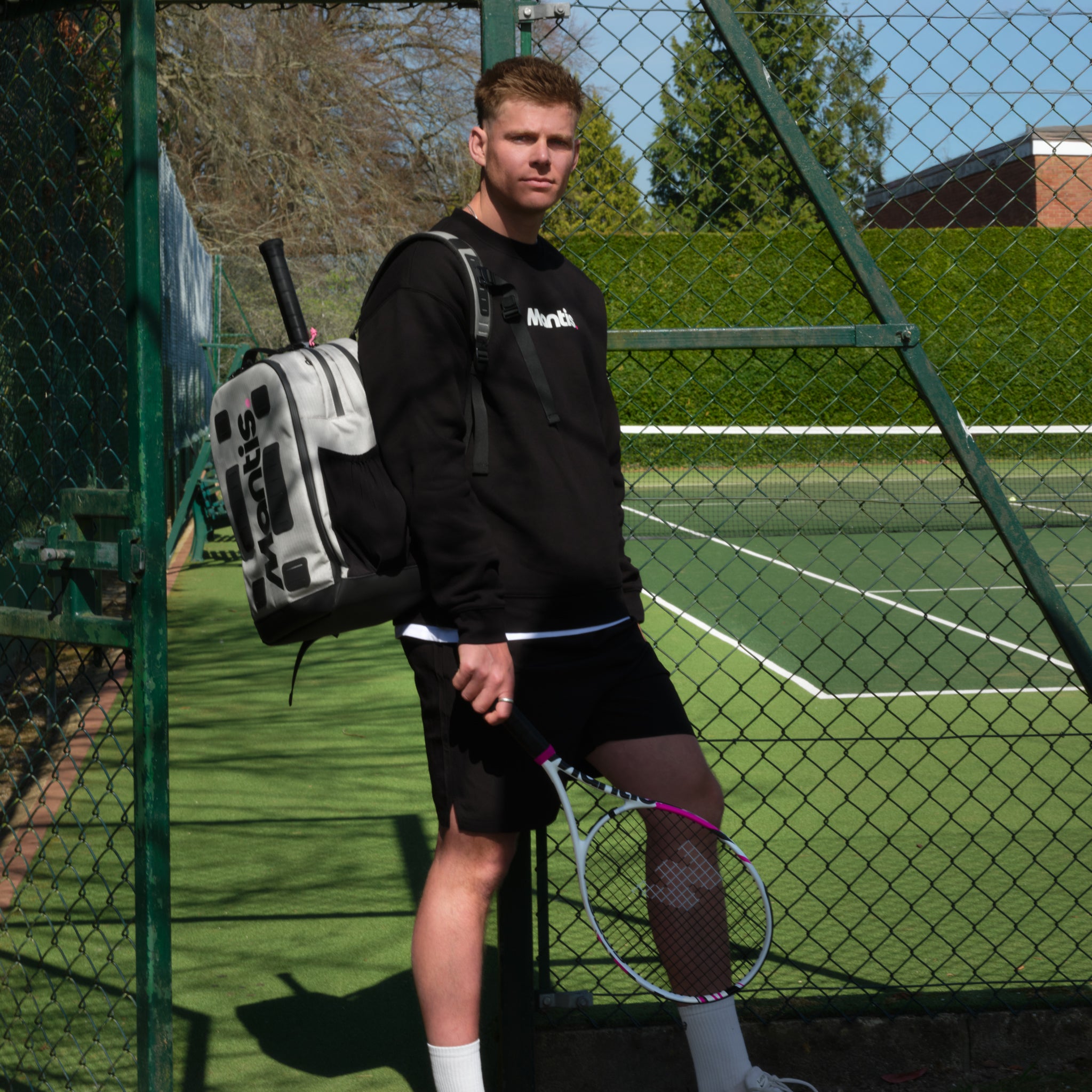
Want to dominate the court in 2025? It starts in the gym, not just on the baseline. Today’s tennis is faster, more explosive, and more demanding than ever. If you want to keep up, tennis strength training is your secret weapon.
This guide unlocks the science behind boosting your power, preventing injuries, and building a game that lasts. We will reveal why strength is now non-negotiable in tennis, break down the muscle groups that fuel your game, and provide step-by-step routines you can follow.
From essential equipment to expert tips that separate amateurs from champions, every section is packed with actionable advice. Ready to serve up game-changing results? Let’s get started.
Why Strength Training is Essential for Modern Tennis
Modern tennis is no longer just a game of skill and finesse. Today’s top players are powerful, athletic, and explosive, and that transformation is driven by tennis strength training. If you want to keep up in 2025, you’ll need more than just a solid backhand.
The sport’s evolution is clear. Over the past decade, ATP and WTA players have boosted average serve speeds by 10 to 15 percent, a change closely tied to improved strength protocols. It’s not just about big serves, either. Strength training enhances groundstroke power, on-court agility, and quick recovery between points.
Consider this: strong muscles and joints protect against common injuries like rotator cuff strains and knee problems. Recreational players often skip structured tennis strength training, while elite athletes dedicate hours each week to tailored routines. That difference is a key reason top pros stay in peak condition.
The mental benefits are just as important. A well-prepared body leads to improved confidence and laser-sharp focus under pressure. Novak Djokovic’s physical transformation and Serena Williams’ fitness dominance are perfect examples of how targeted training can reshape a career.
For those seeking scientific proof, a recent systematic review confirms that tennis strength training boosts both physical fitness and stroke velocity across all ages. To gain a true edge on the court, building strength is no longer optional—it’s essential.
Key Muscle Groups for Tennis Power
Upper Body: Shoulders, Back, and Arms
Building a powerful upper body is fundamental for dominating on the tennis court. Shoulder stability, especially in the rotator cuff and deltoids, is vital for generating forceful serves and withstanding the demands of long matches. Strong back muscles, including the latissimus dorsi and trapezius, fuel powerful swings and a smooth follow-through.
Equally, robust biceps, triceps, and forearms offer precise racquet control and the ability to generate heavy spin. Take Federer, for example—his exceptional shoulder endurance has been crucial in countless five-set battles. For a deeper dive into how upper body development enhances serve velocity and accuracy, particularly in women, see this study on strength training's impact on female tennis players. Tennis strength training in this area lays the groundwork for explosive power.
Core: The Engine Room
The core is the engine room of every tennis player, powering every twist, sprint, and leap. Abdominals, obliques, and lower back muscles work in harmony to deliver rotational strength, which is essential for both groundstrokes and serves.
A well-developed core also sharpens balance and footwork, allowing players to react swiftly and recover from awkward positions. Impressively, over 80% of professional players dedicate time each week to core-specific routines, underscoring its importance for injury resistance and consistent performance.
Lower Body: Hips, Glutes, and Legs
Elite tennis strength training places a premium on the lower body. Powerful glutes and quadriceps drive explosive sprints, quick side-steps, and commanding jump serves. Hip mobility enables a wider shot range and reduces the risk of strains.
Meanwhile, calf and hamstring strength powers rapid changes of direction—think of Nadal’s legendary movement on clay. By focusing tennis strength training on the legs and hips, players unlock the agility and resilience needed for the modern, high-intensity game.
Step-by-Step Tennis Strength Training Routine
Unlocking your best tennis in 2025 means following a proven tennis strength training routine, not just hitting endless forehands. Mantis lays out each step so you can build real power, agility, and resilience that translates directly onto the court.
Step 1: Dynamic Warm-Up
Every quality tennis strength training session kicks off with a dynamic warm-up. This crucial phase primes your muscles, boosts circulation, and fires up your nervous system for high-intensity work.
Try these moves:
- High knees to get your heart rate up
- Arm circles to loosen shoulders
- Dynamic lunges for hip flexibility
Most top academies recommend a 10 to 15 minute dynamic warm-up, so never skip this step if you want to get the most from tennis strength training.
Step 2: Foundational Strength Exercises
The heart of tennis strength training is building foundational power with compound lifts and tennis-specific moves. Focus on:
- Squats and deadlifts to activate major muscle groups
- Bench presses for upper body strength
- Medicine ball slams and cable rotations for rotational force
Aim for 3 to 4 sets of 8 to 12 reps. Deadlifts, in particular, have been shown to boost serve speed and overall explosiveness. Research, like this study on injuries and strength training in collegiate tennis, shows that targeted routines also lower injury risk, making your gains sustainable.
Step 3: Plyometrics and Power Drills
To develop court speed and explosive power, include plyometric drills in your tennis strength training plan. Favourites include:
- Box jumps for vertical leap
- Lateral bounds for side-to-side quickness
- Split squat jumps for lower body explosiveness
Add medicine ball throws to mimic serve and forehand actions. Studies show plyometric training can increase sprint speed by 7 to 10 percent in tennis athletes.
Step 4: Core and Stability Work
A strong core is non-negotiable for tennis players. Integrate:
- Planks to build static strength
- Russian twists for rotational control
- Single-leg balances for stability
Advanced players can add instability tools like BOSU balls or balance pads. Andy Murray’s core circuits are a great example of what’s possible with focused core work.
Step 5: Cool-Down and Mobility
Wrap up every tennis strength training session with a proper cool-down. Use:
- Static stretching for flexibility
- Foam rolling to ease muscle tension
- Mobility drills targeting hips, shoulders, and lower back
Cooling down can reduce muscle soreness by up to 30 percent. Prioritise recovery to keep your body primed for the next big session.
Essential Equipment for Tennis Strength Training
Choosing the right equipment is the backbone of any effective tennis strength training routine. The right tools can help you target key muscle groups, enhance your power, and keep every session engaging.
Here are the must-haves for any player serious about tennis strength training:
- Resistance Bands: Perfect for dynamic warm-ups, shoulder stability, and injury prevention.
- Dumbbells: Versatile for upper and lower body exercises, allowing for progressive overload.
- Medicine Balls: Fantastic for explosive throws, rotational power, and simulating serve mechanics.
- Kettlebells: Great for functional strength, grip endurance, and total-body movements.
- Stability Balls: Build core strength and improve balance, both essential for court performance.
Transforming a home gym for tennis strength training is simple. Start with a few bands, a set of adjustable dumbbells, and a stability ball. These basics let you perform a wide variety of tennis-specific drills, no matter your space.
Don’t overlook the importance of quality racquets and balls for transferring your gym gains onto the court. Mantis offers precision-engineered racquets and balls that complement your strength work. Not sure which racquet suits your style? Try the Racket Finder Quiz for tailored recommendations.
Using the right equipment not only boosts your results but also helps prevent injuries, setting the stage for a more powerful, consistent game.
Periodisation and Recovery for Peak Performance
Unlocking peak performance in tennis strength training is not just about pushing harder every session. It is about working smarter with a structured approach called periodisation. This method cycles training intensity and focus throughout the year, allowing athletes to build power, recover fully, and reduce the risk of injury.
A typical periodisation plan includes three phases:
| Phase | Focus | Example Activities |
|---|---|---|
| Pre-season | Building maximum strength | Heavy lifts, plyometrics |
| In-season | Maintenance and agility | Lighter weights, sprints |
| Off-season | Recovery and mobility | Yoga, swimming, stretching |
By following this structure, players can avoid burnout and keep progressing. Studies show that athletes who periodise their tennis strength training report 25% fewer injuries.
Rest and recovery are just as crucial as the workouts themselves. Scheduling rest days, prioritising quality sleep, and incorporating active recovery sessions like light hitting or yoga all support muscle repair. Elite players, for example, taper their strength routines before big tournaments to peak at the right moment.
Nutrition also plays a vital role. Eating enough protein helps muscles rebuild, while staying hydrated keeps reaction times sharp. For those interested in the science behind effective training cycles, this study on isoinertial vs. machine-based strength training in tennis offers valuable insights into maximising gains and recovery.
Smart periodisation, supported by proper rest and nutrition, helps every player build a stronger, more resilient body for the season ahead.
Expert Tips and Common Mistakes to Avoid
Unlocking your full potential in tennis strength training starts with expert guidance. Mantis recommends working with certified coaches, as professional supervision can make all the difference in achieving safe and effective results. For those looking to connect with experienced coaches or clubs, the Tennis Coaches and Clubs resource offers a range of options to support your journey.
When training, always prioritise technique over lifting heavy weights. Proper form not only maximises results but also reduces the risk of injury. Watch for signs of overtraining, such as persistent fatigue or loss of motivation. Rest and recovery are just as crucial as the workouts themselves.
Tracking progress is essential. Use journals or apps to monitor your gains, set realistic targets, and celebrate milestones. Setting specific, measurable goals ensures your tennis strength training remains focused and rewarding.
Avoid these common mistakes:
- Neglecting core work in favour of upper or lower body exercises.
- Skipping warm-ups, which increases injury risk.
- Ignoring recovery routines like stretching or foam rolling.
Finally, remember that the world’s top players rely on expert advice and evolving strategies. For the latest industry insights and training trends, visit racketbusiness.com. Smart, consistent habits are the foundation for long-term improvement.
You’ve seen how strength training unlocks power, prevents injuries, and transforms your tennis game, whether you’re chasing down drop shots or grinding through winter workouts. But real progress is about more than just reps and routines—it’s about belonging to a community that values dedication as much as you do. If you’re the type who finds joy in the early mornings and late-night sessions, you’re not alone. We’re all in this for the long haul. Ready to take your next step? Mantis is here for committed amateurs—because you deserve quality that matches your ambition.










